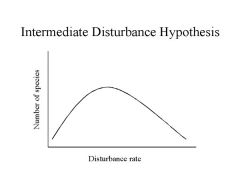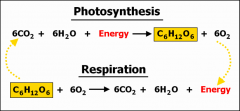![]()
![]()
![]()
Use LEFT and RIGHT arrow keys to navigate between flashcards;
Use UP and DOWN arrow keys to flip the card;
H to show hint;
A reads text to speech;
60 Cards in this Set
- Front
- Back
|
Littoral Zone |
shallow water that is the intertidal zone |
|
|
Semi-diurnal Tide |
-Tide characteristic of having two high and two low tides of equal height |
|
|
Mixed Semi-diurnal Tide |
-Characterized as having two unequal high and low tides |
|
|
Diurnal Tides |
-characterized as having one high and one low tide per day |
|
|
What effects tides? |
-lunar and seasonal cycles in tide height -amount of exposure at particular height -survival is an endurance contest |
|
|
Intertidal Life: Factors |
1. exposure-air and water temps 2. insolation- amount of sunlight 3. wind- "wind chill" 4. wave shock- varies over short distance/substrate 5. salinity- salt content and pH level 6. Biota and Bio-indicators- variation is extreme |
|
|
Sources of Variation |
-physiological-tolerance to conditions -behavioral/eco-migrations, feeding, competition etc. -associations-types of symbiosis -succession |
|
|
Joseph Connell |
-UC Santa Barbara -field experiments -long term studies -focus on biotic interactions and physical distributions -eliminated one species in the study to see what happens to the other's population -Barnacles experiment! |
|
|
Intermediate Disturbance Hypothesis |

|
|
|
Keystone Predator Concept |
Proposed by Robert Paine Single species predator can control community dynamics (barnacles) (lynx and hare) |
|
|
Wave Shock and Surge |
-effects depends on body size, shape, population density, and aggregation |
|
|
Stressors of Intertidal Life |
1. Water Loss 2. Temperature 3. Mechanical Stress |
|
|
Water Loss |
-mobile animals-move with water -move into cracks and burrows -take refuge under algae or sea grass |
|
|
Water Loss |
-sessile organisms inhabit moist sites only with a tolerance of desiccation of 60-90% tissue water ex: limpets-fit "scar" into substrate gastropods- attach foot as baracade mussels- shut close anemones- secrete mucus cover |
|
|
Temperature |
-high temperatures are more stressful -reduce gain: large size in littoral more surface area reduce size attach to substrate light colored -evaporative cooling- sculpted shells of gastropods and retain extra water |
|
|
Mechanical Stress |
-wave action pressure of surf waves ex: Tillamook Lighthouse, WA, 13416 rock 151 vertical feet over the roof -permanent attachment barnacles, annelids, algae (holdfast) shelter in tide-pools and crevices |
|
|
Continental Shelf |
-shelf-slope-rise-seamount-seabed Continental drift and slope -Southern California, N. Baja, broken coasts not so smooth have more islands and banks |
|
|
Subtidal (sublittoral) Zone |
-Three dimentional enviornment: 1. Benthos- diversity larger organisms (deep ocean organisms) 2. Plankton- water mass movement 3. Nekton- highly mobile organism marine mammals, squids, fish |
|
|
Subtidal Zone: Characteristics |
-water movement- currents and swells -temp-more or less consistent -salinity-stable -light- vary clear water -sound- high rate and distance -structure-water columns and open ocean |
|
|
Temperature |
-varies seasonally, regionally, vertically with most organisms being poikilothermic |
|
|
Salinity |
Freshwater inputs v.s evaporation with horizontal and vertical mixing of nutrients |
|
|
Light |
-Surface Reflection latitude, season, time of day, sea state absorption by particles and molecules scattering euphoric/dysphotic/aphotic zones
|
|
|
Sound |
-Pressure and displacement waves -near and far field sounds -sound production-accidental, purposeful -functions-detection, communication -"buffening" - rock concert speaker near and far field sounds |
|
|
Pelagic Zone |
-Open Ocean "Blue Ocean" |
|
|
Epipelagic (Photic) Zone |
-most algae and animals 10% oceanic volume -environment: light, well mixed nutrients -primary production from phytoplankton -highly variable adaptations dependent on oceanic region |
|
|
Mesopelagic |
-dim light -animals rely on primary production from Photic Zone rain down migration -fishes and inverts usually <10cm, well developed teeth, large eyes and mouth, photophores |
|
|
Mesopelagic organisms |
-species (gender specific) symbiosis of photophores ---> costly with energy and available nutrients. i.e. melanin from Amino Acids |
|
|
Open Sea (Pelagic Zone) |
-plankton-largely at mercy of currents -nekton-somewhat independent of current -Taxonomy: phytoplankton v.s zooplankton Lifehistory: -Holoplankton- entire life in plankton -Meroplankton- only part of life in plankton |
|
|
Size Distribution of Pelagic Organisms |
Mega>Macro>Meso>Micro>Nano>Pico |
|
|
Nekton |
-aquatic animals that are able to swim and move independently of water currents
|
|
|
Universal Problem |
Sinking!!! 2 factors: -overweight -surface area |
|
|
Strategies to Reduce Overweight |
a. ion exchange- no change in osmolarity b. floats c. liquids, esp. oils (tissue fluids) |
|
|
Surface Area |
Change surface area of resistance: -small body size- esp in tropics -alter body shape -spines and projections |
|
|
Holoplankton |
protistans -foraminfera -radiolarians -cnidarians-jellyfish -ctenophora-come jellies -annelida- polychaeta -mollusca -copepods |
|
|
Meroplankton |
-diverse -larvae of many taxa from virtually all habitats ex: nauplius |
|
|
Open Ocean: Light |
-depth -reflection -latitude -time of day -transparency -season -weather conditions -seastates |
|
|
Sea States |
-system (0-12) quantify nature of sea conditions Beaufort Sea States- wind driven swell indications |
|
|
Primary Productivity |

-animals rely on primary producers molecules within absorption spectrum action spectrum reveals biological effectiveness of different wavelengths -nutrients |
|
|
Epipelagic |
-surface waters -most of energy input (sunlight) -food chain begins with photosynthesis -maximum of 200m deep |
|
|
Deep Sea |
-high pressure, cold, lower dissolved oxygen, bioluminescence, slow current, lots of sediment -animals have low energy tissues, sluggish, little life the deeper you go. |
|
|
Mesopelagic |
-"twilight zone" -faint light -bacteria, salps, shrimp, jellies, etc -Many bioluminescent: ex: anglerfish, lanternfish, fangtooth |
|
|
Continental Coast: Kelp Forest Components |
-canopy -erect under-story -prostrate canopy -turf -pavement |
|
|
Kelp Forest Characteristics |
-patches are unusually persistent -competition for light -spore swarming -sensitivity to stress -dominance hierarchies and wave stress |
|
|
Disturbance |
-storms-effects vary -frequency, magnitude, exposure, entanglement |
|
|
El Nino |
-1982-1984 -high temps -high sea levels -suppressed up-welling -lowered thermocline -reduced nutrient i.e. oxygen |
|
|
Kelp Forest Detruction |
-removal of apex predator -----> explosion of herbivore population ------->deforestation of kelp forest ------>reduction in trophic levels |
|
|
North Pacific Kelp Forest Ecosystem |
-Arose 20 mya -prior to humans settlement, sea urchins prevented from overgrazing by sea otters -decline in sea otter population -fur traders 19th century -recovery in 20th century -due to increase in sea otter pop due to legal protection |
|
|
Southern California Kelp Forest |
-higher diversity than in far northern Pacific ecosystem -fur trader eliminated most sea otters in 19th C -recovery of kelp forest -began as fishing for largest sea urchin species in 1970's |
|
|
Types of Reefs |
A. Large -fringing reefs -barrier reefs -atolls B. Small -Lagoon reefs -patch reefs |
|
|
Reef Structure |
-outer slope -corals to 50m -sever wave action -poorly known |
|
|
Windward Reef Margin |
-spur and grove -reef structure: windward --> leeward -Algal ridge: grooves may penetrate to form blowholes |
|
|
Estuaries |
"A semi enclosed coastal body of water which has a free connection with the open sea and within which sea water is measurably diluted with fresh water derived from land drainage." -Pritchard 1952 |
|
|
Hutchings and Collett 1977 |
"Tidal portions of river mouths, bays, and coastal lagoons, irrespective of weather they are dominated by hyper-saline, marine, or freshwater conditions." |
|
|
Regional variant 'esteros' (negative estuaries) |
-structural estuaries -infrequent freshwater inflow |
|
|
How are estuaries formed? |
- drowning river valleys/coastal plains -bar built -tectonics -glacial means |
|
|
Coastal Plain Estuaries |
Chesapeake Bay |
|
|
Tectonic Estuaries |
San Francisco Bay |
|
|
Bar Built Estuaries |
-US East and Gulf Coasts |
|
|
Fjords |
-a long, narrow, deep inlet of the sea between high cliffs, as in Norway and Iceland, typically formed by submergence of a glaciated valley. -Northern Europe, Alaska, and Canada |
|
|
Salinity Profile of Estuaries |
-gradual mixing to strong stratification -well mixed -partially mixed -stratified-arrested salt wedge |

